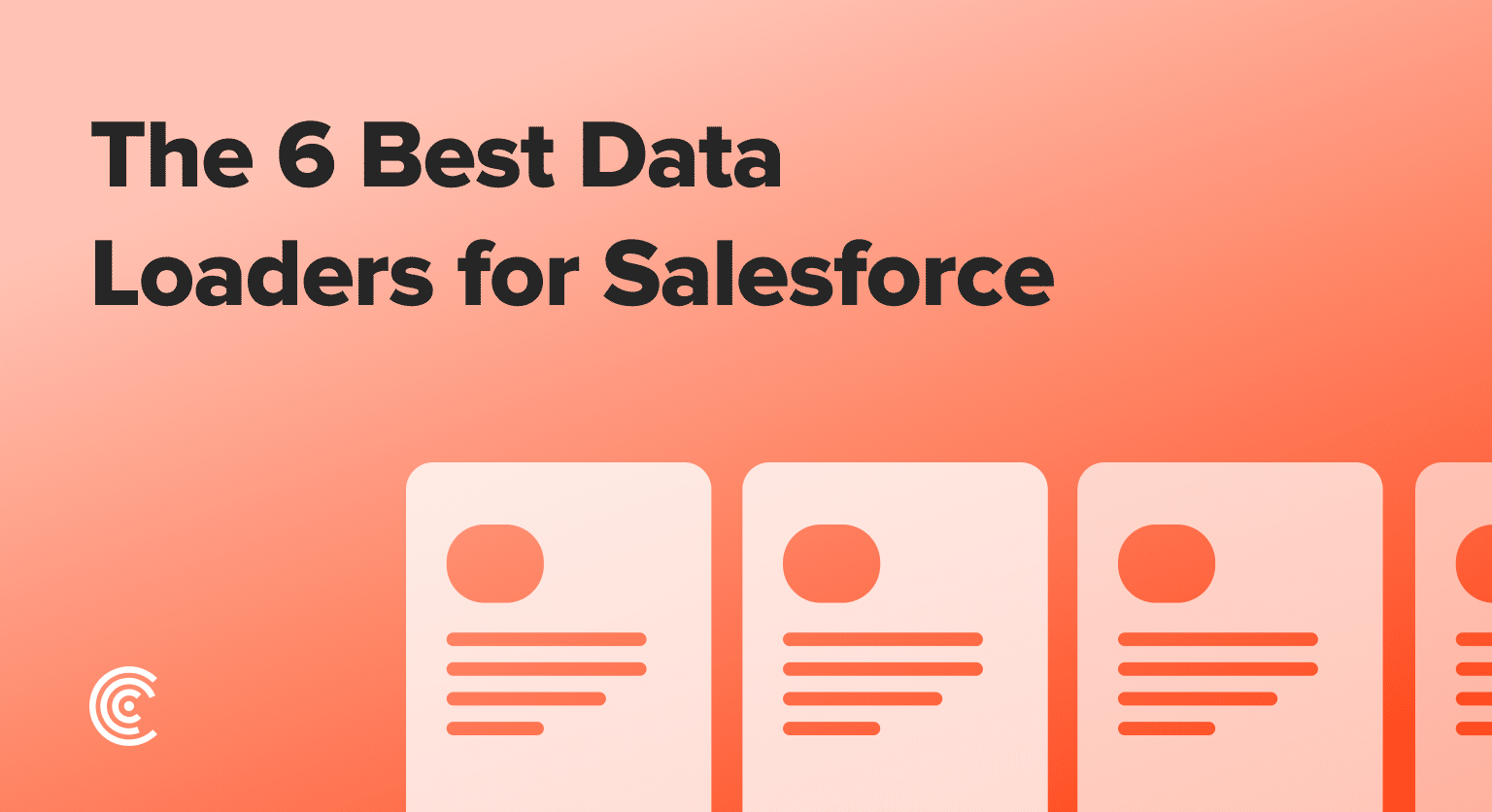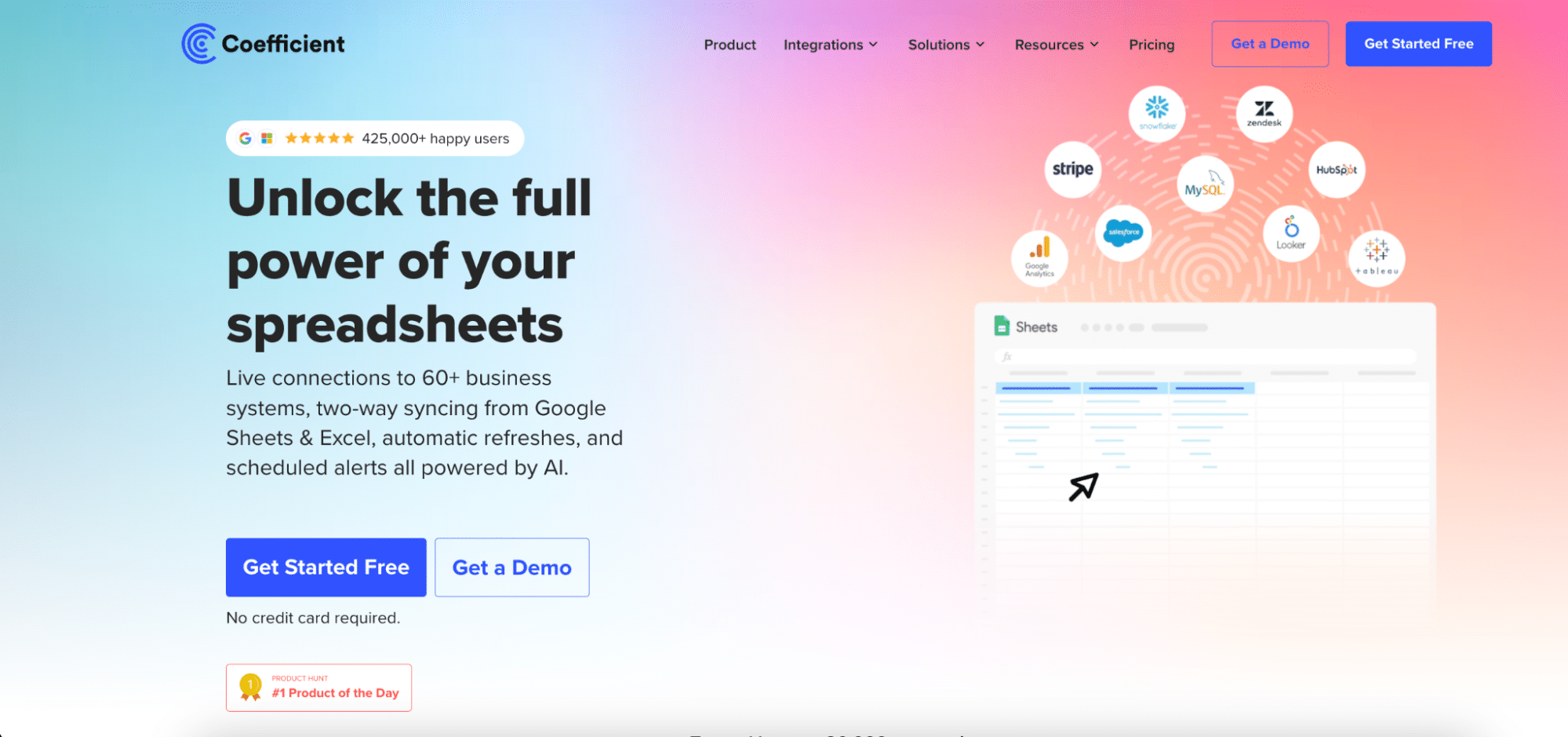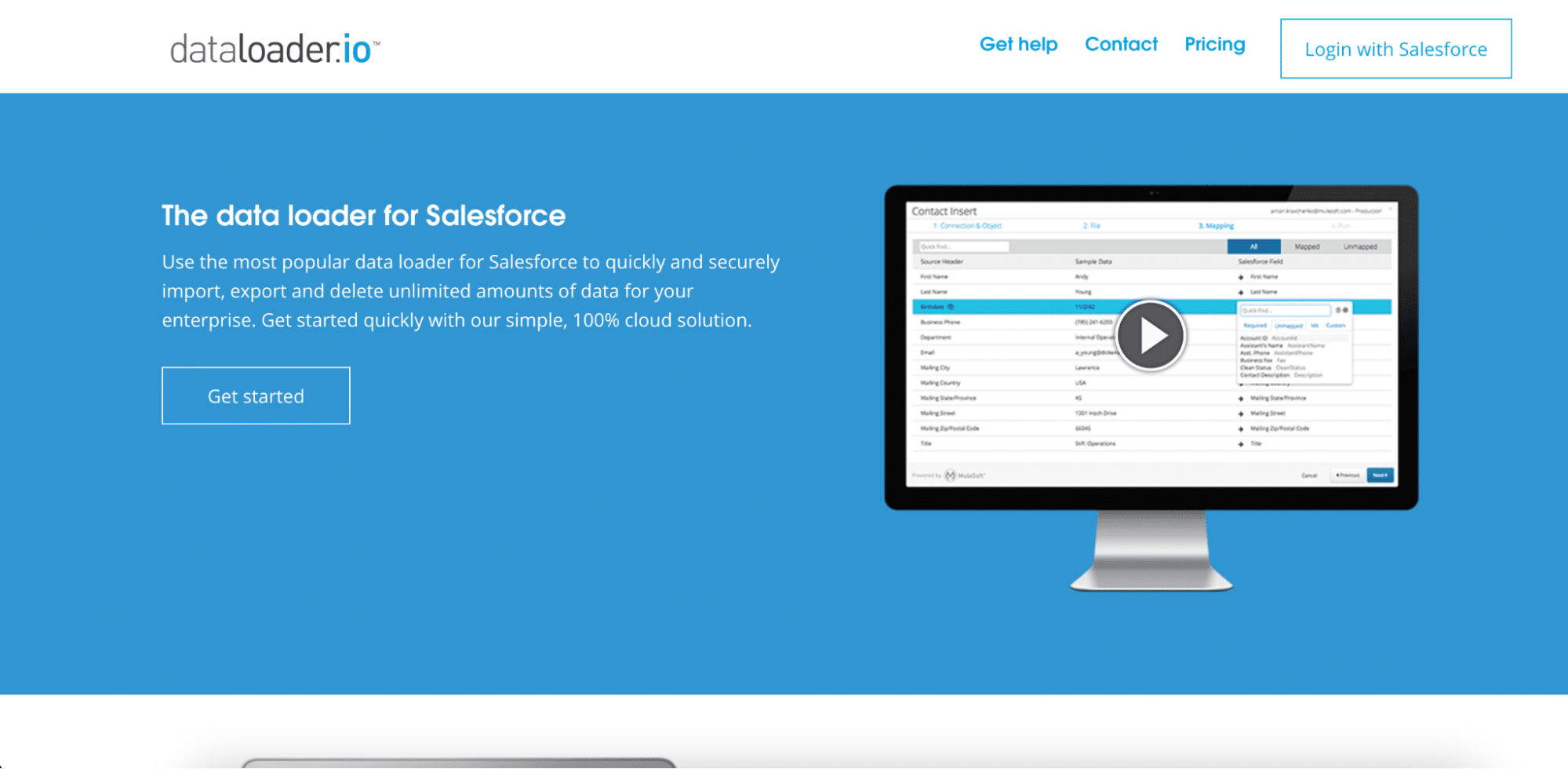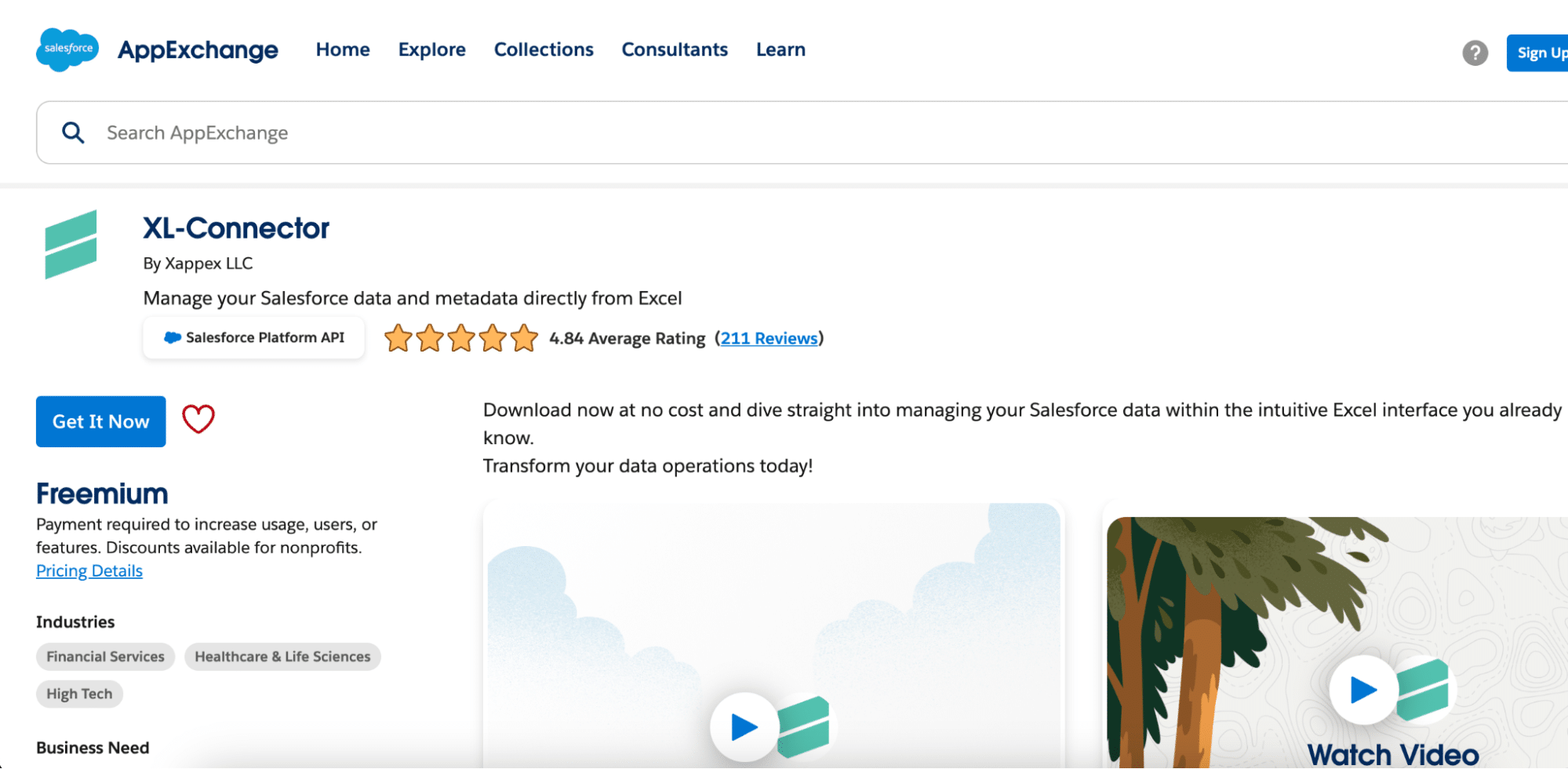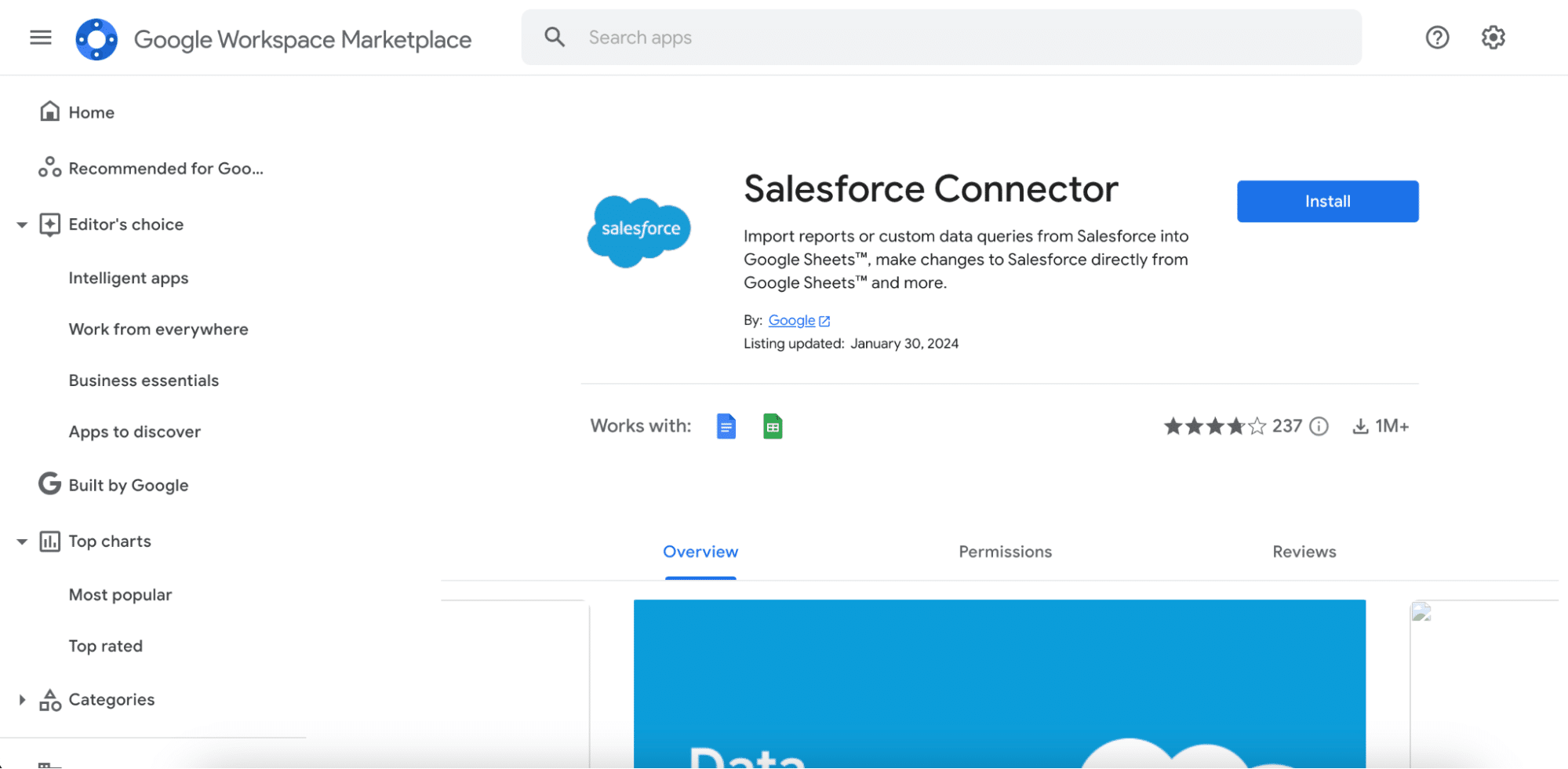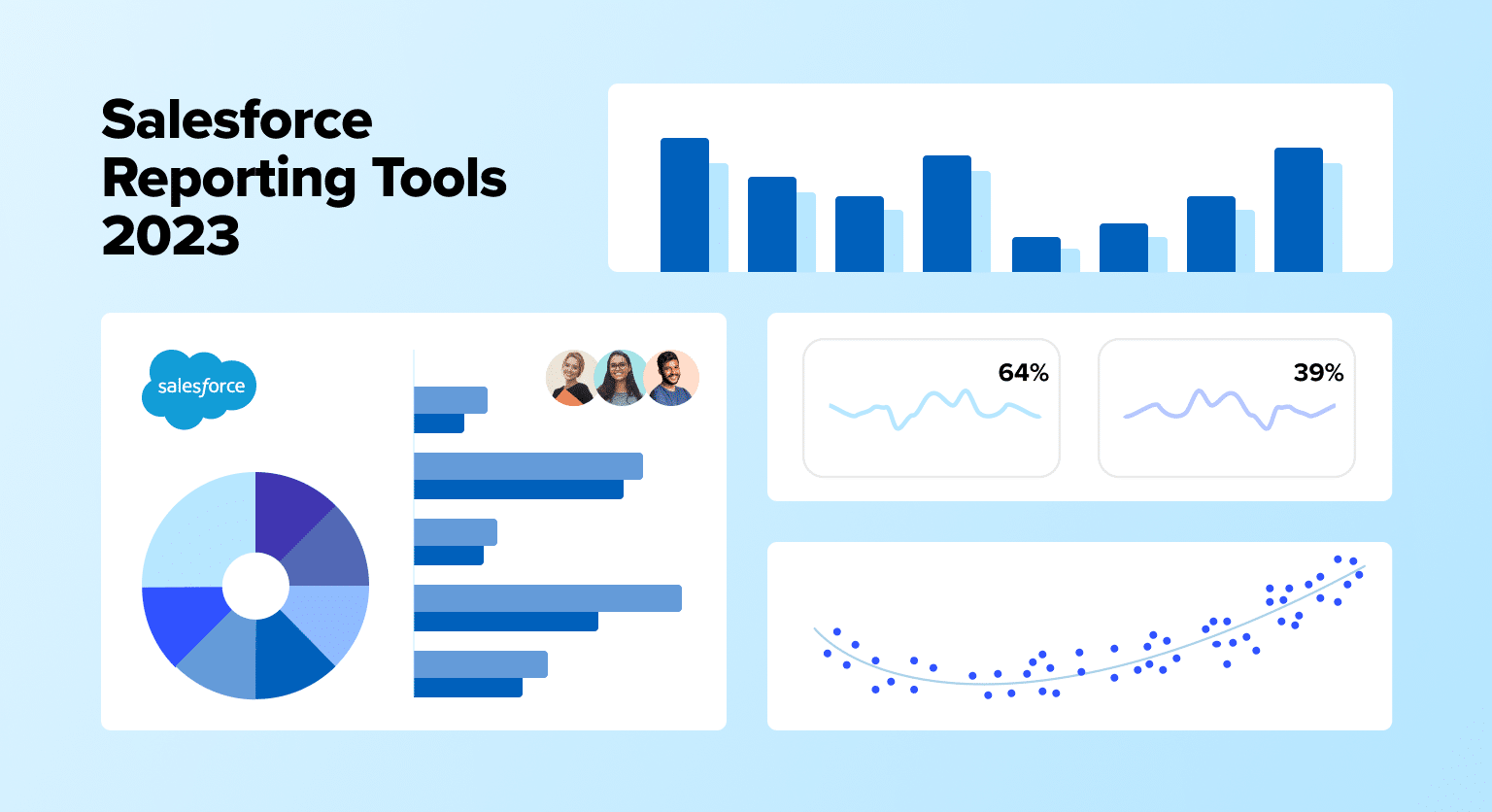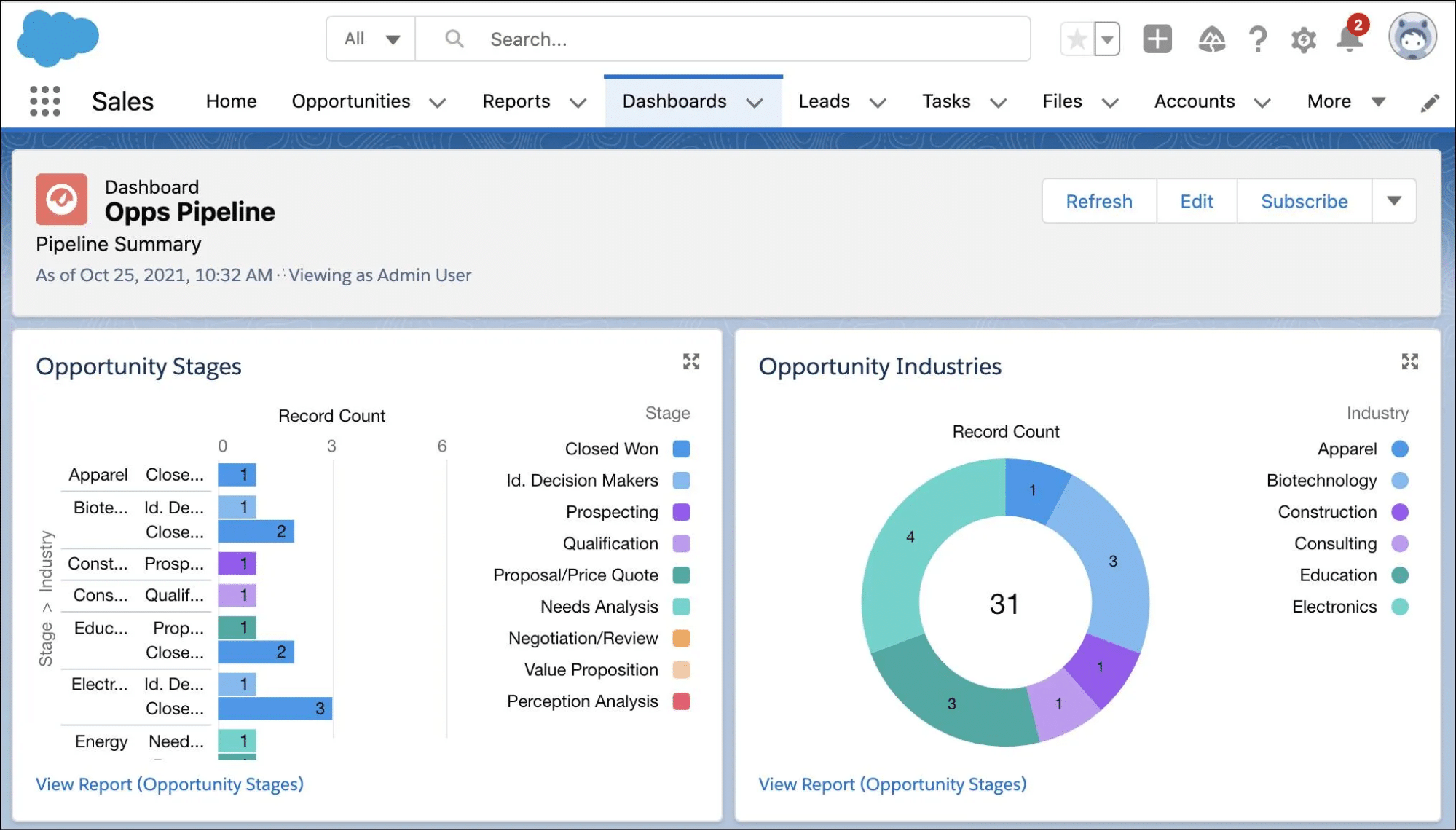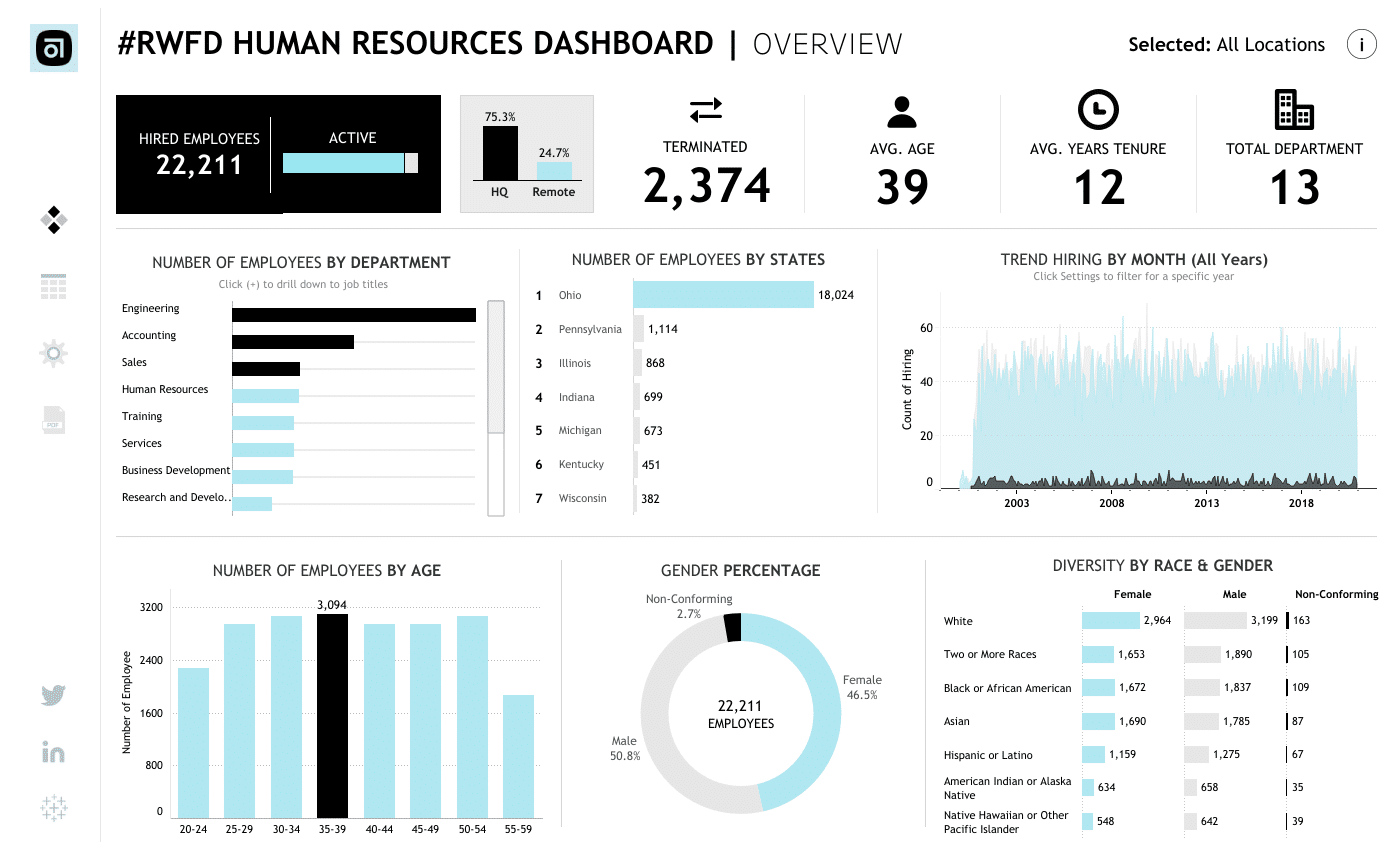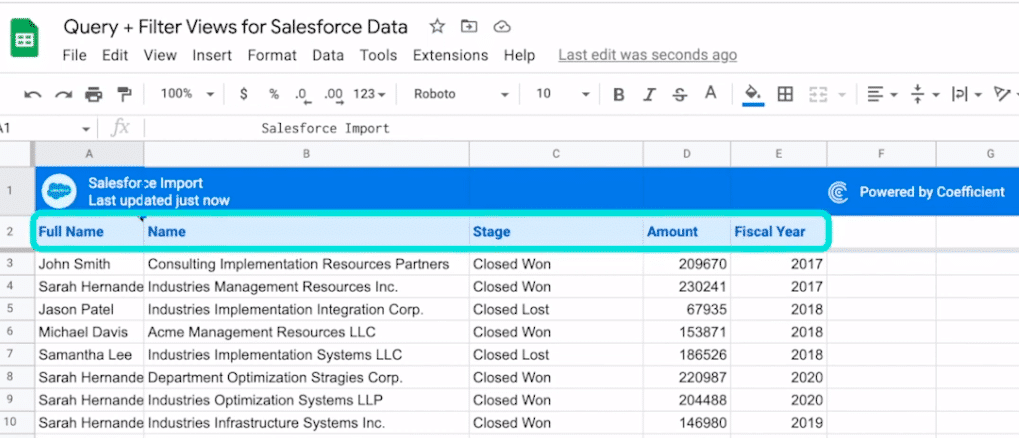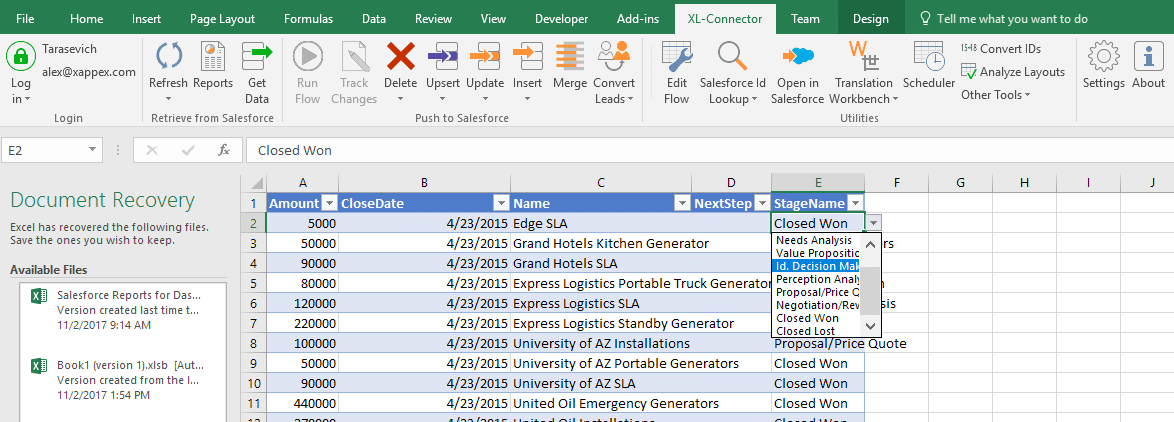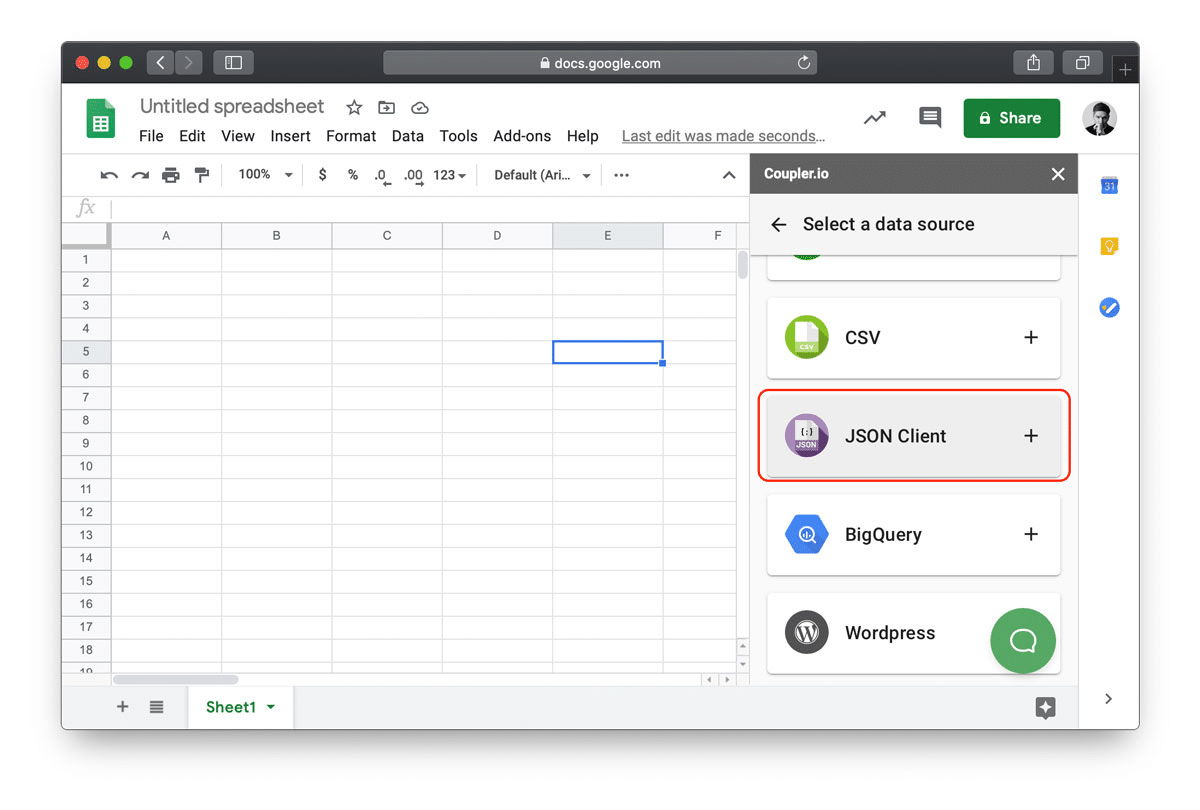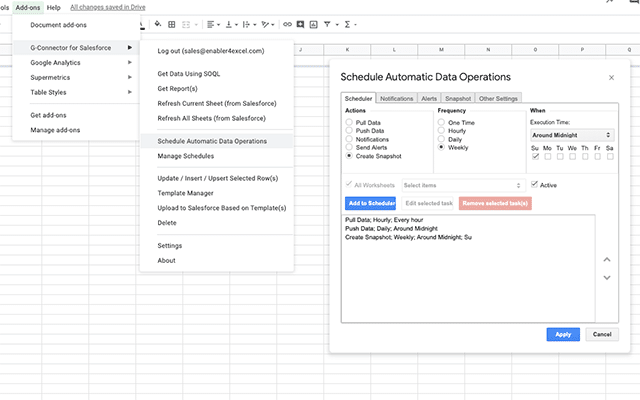The pursuit of revenue growth is more relentless than ever.
Leading this charge is Revenue Operations (RevOps), which unites sales, marketing, and customer success to maximize revenue across the entire customer journey.
At the heart of it is Salesforce, a leading CRM solution trusted by businesses worldwide.
But Salesforce is not just a standalone tool; it’s a robust ecosystem. It becomes more potent when integrated into other cutting-edge apps, APIs, and services. In fact, recent studies show CRM integrations can boost revenue up to 20%.
In this comprehensive guide, you will discover the top Salesforce integrations that revenue teams can leverage in 2024 and beyond.
Let’s get started!
What is Salesforce?
Salesforce is a dynamic cloud-based Customer Relationship Management (CRM) platform. It’s not just a software solution. As a business, Salesforce becomes a strategic partner that empowers you to build and nurture customer relationships, drive sales, and grow revenue.
Salesforce’s strength is not only about its features. The real thing is its ability to integrate with a vast ecosystem of third-party applications and services.
These integrations extend Salesforce’s functionality, making it a central hub for all customer-related activities.
Benefits of Using Top Salesforce Integrations
In RevOps, staying ahead of the competition needs a vision and the ability to execute strategies efficiently.
Salesforce integrations are the backbone of this execution. You can add these APIs and third-party apps independently or by integrations of unified platforms like Zapier.
This eventually leads to offering many benefits that can make a significant impact on your organization’s revenue growth, such as:
1. Streamlined Workflows and Processes
It’s easier to streamline workflows and automate long and repetitive tasks. Integrations also help to reduce manual errors in storing customer data and allow teams to focus on high-value activities.
Companies using workflow automation report a 96% improvement in productivity.
And a 92% reduction in error, allowing teams to do more in less time with data integration and sales processes.
2. Enhanced Data and Insights
You can get information from several sources through app integration in the Salesforce CRM, creating a clear view of your customers and prospects.
This enriched data provides RevOps teams with invaluable insights to make informed decisions.
Also, data-driven businesses see a 19% increase in lead conversion rates after using advanced analytics, which results from consistently qualified new leads!
3. Expanded Functionality
Integration tools expand the functionality of your CRM.
You get to add features for inbound and outbound marketing automation, e-signatures, and external systems for analytics. These are not native to Salesforce but are much needed for your business.
Statistics from MarketSplash show that 67% of companies invest in CRM software and integration solutions to improve sales and marketing efforts. With more functionalities, they increase their revenue by an average of 41%.
4. Easy Scalability
As your business grows, Salesforce platform integrations make it easier to scale your operations with their constant updates and features, too. You can add new tools and functionalities without overhauling your CRM setup.
An International Data Corporation (IDC) report shows that when businesses manage their scalability with SaaS/ CRM integrations, they achieve a 23% reduction in customer acquisition costs. They also experience a 25% increase in cross-selling and upselling opportunities.
Top Salesforce Integrations: 10 Favorites in 2024
In a nutshell, competitive edge matters. This means leveraging integrations for your Salesforce account is not only helpful — it’s crucial for revenue growth.
So let’s find out the top 10 types of integrations offered on the Salesforce Appexchange.
1. Pardot – Marketing Automation

Pardot bridges the gap between marketing and sales. It enables marketing teams to capture, nurture, and qualify leads. Real-time lead scoring and behavior tracking will ensure your sales teams get quality leads and high conversion rates.
Key Features:
- Lead Scoring: Rank leads based on their engagement and behavior, ensuring sales teams focus on the most promising prospects.
- Drip Campaigns: Automate personalized email marketing campaigns. Nurture leads throughout the sales funnel.
- Analytics and Reporting: Gain insights into campaign performance and ROI. There is more room for data-driven marketing strategies.
Recent Updates:
Pardot now offers improved AI-driven analytics. This enables more accurate lead scoring and personalized content recommendations.
Pricing:
Pricing varies based on the number of users and features required. It starts at $1,250 per month.
Bonus Tip:
Use dynamic content in Pardot. It will deliver personalized messages to leads, increasing engagement and conversion rates.
2. Coefficient – Google Sheets Add-on

Coefficient is a game-changing, free Google Sheets and Excel add-on designed to make it easier for RevOps to collect and analyze the data they need to drive revenue. It seamlessly connects Salesforce data to their spreadsheets, where it can be combined with other data for more complete analysis.
Coefficient is designed to make reporting and analysis easier, offering free dashboard templates alongside robust spreadsheet automation and collaboration features.
Key Features:
- Real-time Data Sync: Ensure your Salesforce data in Google Sheets is always up-to-date.
- Automated Alerts: Configure alerts for data modifications and when thresholds are crossed. Route these notifications to Gmail or Slack as needed.
- Data Writebacks: Change data in Google Sheets and write it back to Salesforce automatically.
Recent Updates:
Prefer Microsoft Excel over Google Sheets? The Coefficient has you covered!
Head over to Coefficient.io to join the waitlist.
Pricing:
Coefficient’s monthly pricing starts at $49 per user, with a free trial available.
Bonus Tip:
Leverage Coefficient’s data writeback feature to quickly update Salesforce records directly from Google Sheets. It saves time and reduces data entry errors.
3. DocuSign – E-Signatures

DocuSign integration simplifies contract workflows. You can send, track, and sign contracts directly within Salesforce. This eliminates the need for paper-based processes. It also accelerates deal closures and enhances the customer experience.
Key Features:
- Electronic Signature: Speed up deal closures by collecting legally binding e-signatures.
- Agreement Templates: Create reusable templates for standard contracts. Save time and ensure consistency.
- Workflow Automation: Automate contract approval processes and notifications.
Recent Updates:
DocuSign’s recent updates include improved mobile capabilities for signing contracts on the go and more compliance features.
Pricing:
Pricing varies based on the number of envelopes (documents) sent monthly, with plans starting at $10.
Bonus Tip:
Use DocuSign’s integration with Salesforce CPQ (Configure, Price, Quote). It streamlines the generation of sales quotes and contract management, too!
4. Gong – Call Recording and Intelligence

Gong records and analyzes sales calls, providing valuable insights. It helps RevOps teams understand what’s working in their sales and what needs improvement. This integration enhances sales coaching, leading to better outcomes.
Key Features:
- Call Recording: Record sales calls and meetings for review and analysis.
- Conversation Analytics: Gain insights into sales call effectiveness. Find areas for improvement.
- Sales Coaching: Use AI-driven insights to coach sales reps and improve their performance.
Recent Updates:
Gong’s latest updates include enhanced transcription accuracy and integration with video conferencing platforms. Also, a more friendly user interface is needed.
Pricing:
Pricing is available upon request.
Bonus Tip:
Use Gong’s AI-driven insights to identify successful sales call patterns. Coach your sales team accordingly, leading to improved conversion rates.
5. Outreach – Sales Engagement

Outreach is a powerful sales engagement platform. It allows scale automation of outreach sequences, email tracking, and personalized communication. It empowers your sales team to engage with prospects more effectively.
Key Features:
- Sequencing and Automation: Create automated email and call sequences to engage prospects at the right time.
- Email Tracking: Track email engagement and receive alerts when prospects open or click on emails.
- Personalization: Customize outreach efforts to resonate with individual prospects.
Recent Updates:
Outreach continuously updates the platform to enhance user experience and add new features. There are too many to track!
Pricing:
Pricing varies based on the number of users and features required, with plans typically starting at $100 per user per month.
Bonus Tip:
Salesforce users can leverage the power of sequences to automate follow-ups and nurture leads. It increases your chances of conversion.
6. ZoomInfo – Contact and Company Data

ZoomInfo is an integration that enriches contact and company profiles in Salesforce with up-to-date data. This integration ensures your database is always accurate. It also helps you target suitable leads and make data-driven decisions.
Key Features:
- Contact and Company Data Enrichment: Update and complete contact and company records.
- Real-time Data Sync: Keep your Salesforce database current with the latest information.
- Targeted Lead Generation: Identify and target ideal prospects with precision.
Recent Updates:
ZoomInfo has expanded its database coverage. Now, it provides access to an even more comprehensive range of contacts and companies.
Pricing:
Pricing varies based on the number of users and data credits required.
Bonus Tip:
Use data enrichment to maintain a highly accurate database. This allows your sales and marketing teams to target suitable leads at the correct times.
7. Tableau – Analytics and Reporting

Tableau brings real-time analytics and reporting capabilities to Salesforce. You can create interactive dashboards and reports in other systems and integrate them into your Salesforce account.
It will enable your RevOps team to visualize data and gain actionable insights.
Key Features:
- Data Visualization: Transform complex data into visual insights that are easy to understand.
- Real-time Analytics: Access up-to-the-minute data for timely decision-making.
- Customizable Dashboards: Build customized dashboards tailored to your specific KPIs.
- Flexible Data Transfer: Spreadsheet lovers can export Tableau to Excel with Coefficient for more streamlined analytics and reporting.
Recent Updates:
Tableau regularly releases updates to enhance its data visualization capabilities and performance.
Pricing:
Tableau offers a variety of pricing options, including individual and enterprise plans.
Bonus Tip:
Create interactive dashboards that provide a holistic view of your RevOps performance. It will lead to quick and data-driven decision-making.
8. Slack – Collaboration

Slack is the most popular and seamless connector of the Salesforce user interface for team communication and collaboration.
It connects your sales, marketing, and support teams. This allows them to share real-time information, updates, and insights.
Key Features:
- Real-time Messaging: Enable instant communication and updates within Salesforce records.
- Channel Integration: Connect Salesforce data to specific Slack channels for focused collaboration.
- Notifications: Receive important Salesforce updates within Slack.
Recent Updates:
Slack is improving its integration capabilities to provide a more smooth collaboration experience.
Pricing:
Slack offers various pricing tiers, including a free plan with limited features.
Bonus Tip:
Leverage different slack channels and connecting workspaces to other organizations. It will help develop shared environments with outside groups, clients, or teams.
9. Conga Composer – Document Generation

Conga Composer simplifies document generation from Salesforce data. It automates the creation of contracts, proposals, and other documents. This reduces manual work and ensures accuracy.
Key Features:
- Template Creation: Design templates for various document types, ensuring brand consistency.
- Dynamic Document Generation: Populate documents with Salesforce data.
- Workflow Automation: Create document generation workflows to streamline business processes.
Recent Updates:
Now offers improved template management and advanced document automation features.
Pricing:
Pricing varies based on the number of users and features required, with plans typically starting at $15 per user per month.
Bonus Tip:
Use Conga to create personalized proposals and contracts. Make sure they reflect the specific needs and preferences of your prospects. This increases the likelihood of closing deals.
10. Zuora – Subscription Management

Zuora is crucial for businesses with subscription-based models. It manages recurring customer subscriptions and automates billing, invoicing, and revenue recognition processes within Salesforce.
Key Features:
- Subscription Billing: Automate subscription billing and invoicing processes.
- Revenue Recognition: Ensure compliance with revenue recognition standards.
- Subscription Metrics: Gain insights into subscription performance and growth.
Recent Updates:
Zuora has enhanced its platform to meet evolving subscription management needs.
Pricing:
Pricing varies based on the number of subscriptions and features required.
Bonus Tip:
Use Zuora’s subscription metrics to analyze customer behavior and identify opportunities. This can assist in upselling or cross-selling add-on services.
Level-Up Salesforce with These Integrations
These top Salesforce integrations represent a goldmine of potential for RevOps teams in 2023. They will help your organization streamline operations, gather valuable insights, expand functionality, and scale quickly.
Ready to Revolutionize Your Salesforce Data Analysis?
Coefficient is a game-changer for data analysis and reporting as the Google Sheets add-on. It’s time to experience the Coefficient firsthand. To put these insights into action and unlock the full potential of your Salesforce data.
